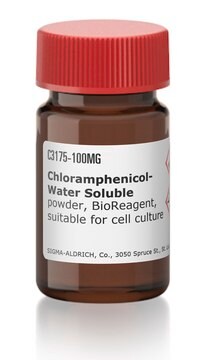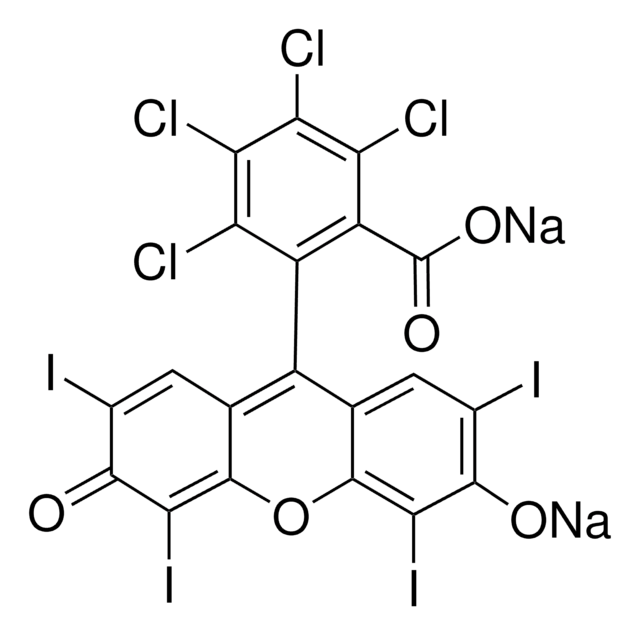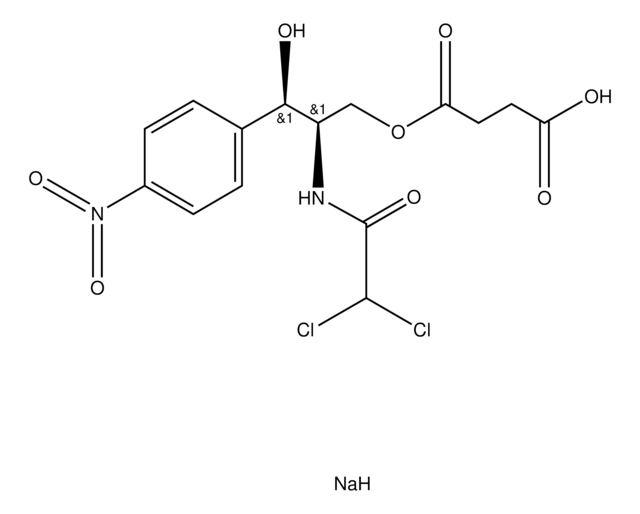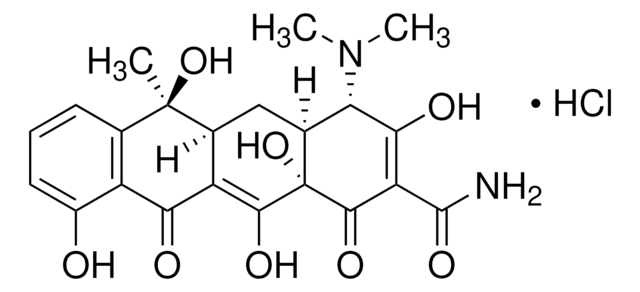C1919
Cloramfenicolo
BioReagent, suitable for plant cell culture
Sinonimo/i:
D-(−)-treo-2,2-dicloro-N-[β-idrossi-α-(idrossimetil)-β-(4-nitrofenil)etil]acetammide, D-(−)-treo-2-dicloroacetammido-1-(4-nitrofenil)-1,3-propanediolo, D-treo-2,2-dicloro-N-[β-idrossi-α-(idrossimetil)-4-nitrofenetil]acetammide, Cloromicetina
About This Item
Prodotti consigliati
Nome Commerciale
BioReagent
Livello qualitativo
Forma fisica
powder
tecniche
cell culture | plant: suitable
Impurezze
Endotoxin, tested
Punto di fusione
149-153 °C (lit.)
Spettro attività antibiotica
Gram-negative bacteria
Gram-positive bacteria
mycobacteria
mycoplasma
applicazioni
agriculture
Modalità d’azione
protein synthesis | interferes
Temperatura di conservazione
2-8°C
Stringa SMILE
OC[C@@H](NC(=O)C(Cl)Cl)[C@H](O)c1ccc(cc1)[N+]([O-])=O
InChI
1S/C11H12Cl2N2O5/c12-10(13)11(18)14-8(5-16)9(17)6-1-3-7(4-2-6)15(19)20/h1-4,8-10,16-17H,5H2,(H,14,18)/t8-,9-/m1/s1
WIIZWVCIJKGZOK-RKDXNWHRSA-N
Informazioni sul gene
human ... CYP1A2(1544)
Cerchi prodotti simili? Visita Guida al confronto tra prodotti
Descrizione generale
Applicazioni
Azioni biochim/fisiol
Modalità di resistenza: l′uso della cloramfenicolo acetiltransferasi acetila il prodotto e lo inattiva.
Spettro antimicrobico: questo è un antibiotico ad ampio spettro contro batteri gram positivi e gram negativi e viene utilizzato principalmente per scopi oftalmici e veterinari.
Avvertenza
Nota sulla preparazione
Altre note
Avvertenze
Danger
Indicazioni di pericolo
Consigli di prudenza
Classi di pericolo
Carc. 2 - Eye Dam. 1 - Repr. 2
Codice della classe di stoccaggio
11 - Combustible Solids
Classe di pericolosità dell'acqua (WGK)
WGK 3
Dispositivi di protezione individuale
Eyeshields, Gloves, type P3 (EN 143) respirator cartridges
Certificati d'analisi (COA)
Cerca il Certificati d'analisi (COA) digitando il numero di lotto/batch corrispondente. I numeri di lotto o di batch sono stampati sull'etichetta dei prodotti dopo la parola ‘Lotto’ o ‘Batch’.
Possiedi già questo prodotto?
I documenti relativi ai prodotti acquistati recentemente sono disponibili nell’Archivio dei documenti.
I clienti hanno visto anche
Articoli
Antibiotic kill curve is a dose response experiment in which mammalian cells are subjected to increasing amounts of selection antibiotic
Il team dei nostri ricercatori vanta grande esperienza in tutte le aree della ricerca quali Life Science, scienza dei materiali, sintesi chimica, cromatografia, discipline analitiche, ecc..
Contatta l'Assistenza Tecnica.










